QuestionQUESTION: I have a baby ringneck parrot . It has feathers but it is still very small. But it has gained a bird like shape. Small tufts of hair are visible under the wings. Its ring has not even showed a hint. It can walk just without falling now and nibbles for its own food. It cant fly though and also makes no attempt for the same. Fine hairs have grown under its belly,enough to cover its skin.
Its a healthy parrot and has an OK amount of excreta. But two things bother me. Firstly I notice a very hard little bulging just below the beak (on the neck). It is like an organ or something. Since I am a total "know nothing " as far as parrots are concerned I need to know "What is that thing? "
Secondly I notice a soft round pouch like body part slightly under the hub I mentioned. Though this pouch is completely invisible under the newly grown green hairs, even though a small crease like projection of the skin from beneath the hairs give a sort of "bulging "appearance. Although it would be impossible to tell if someone hasn't examined it thoroughly with his/her hands. Is it something dangerous that we should immediately look into ?
ANSWER: Hi, Shourya. Thanks for posting!
Do you have any idea how old this baby is? It sounds like this baby is young enough to still need its parents to feed it. Where are the parents? What are you feeding this baby?
I think what you are describing to me is the baby's crop. The crop is the baby bird's "stomach." This is where any food goes to be digested into the bird's body. Depending on the age of the baby, the crop should be bulging with food most of the time. In a search engine, use the word string "handfeeding baby parrots" or "baby parrots" or "parrot crop" and see if you can bring up some websites where you can see baby parrots. The fat bulging thing you will see at the chest is a crop.
I think the hard bulging thing you see on the neck is most likely the bird's neck itself. Their neck bone kind of sticks out in a baby bird. Again, look at some pictures on the internet of baby parrots.
If you can answer my questions above, I can probably help further. Visit my website for information on how you should be caring for this little one:
www.angelfire.com/falcon/birdinfo/index.html
Chrys
---------- FOLLOW-UP ----------
QUESTION: Thanks a lot for your advice.
I was really getting worried.
Now I should answer your questions.
It's age:- When we had bought it , the vendor said that it was 10 days old. Well , it had some feathers , I cant say it was completely naked, but it was also not even close to what it is today, as far as feathers are concerned. I had to hand feed it then by difficult means, but after 4 days it started to eat( move its beak in chewing manner) and tried desperately to swallow some of it. One fine morning on the 6th day I found it eating nicely from the plate .
what it eats:-I give it a very finely ground mixture of two types of cereals , 5 times a day.
Its parents:- I have no idea of its parents.
Now I would like to tell you some recent developments i have
observed in it.
Firstly, I find that it is trying to FLY in the cage. What should I do? If I let it out I am afraid it will fly away when it learns how to.
Secondly,It is also trying to climb the walls of the cage.
Thirdly, it has become very intimate with my mom. It climbs up to her hand and then slowly towards her shoulder .
Here also i am feared of its flying away. Also what if it does not want to get back to its cage? Please note that we are not having any such problems AT PRESENT.
What should I do?
AnswerHi again, Shourya.
What an interesting story! If this bird is trying to fly, it is ready to fledge. Fledging means taking its first flight. Baby parrots LOVE to fly, so, yes it will "take off" if you let it out of its cage. However, you can let it out in a room with a door that shuts so it can't get loose outside in the wild. A baby bird needs to learn how to fly and flying helps to build up the muscles in the chest, on the back, etc. Once the baby learns how to fly well and how to land properly, you can keep its wing flight feathers trimmed so that it cannot gain altitude and fly away when/if you want to let it out. If you don't want to let the bird out of its cage to fly, then you will need to provide a large enough cage so the bird can fly inside its cage (or at the bare minimum be able to vigorously flap its wings without touching anything inside the cage with its wings, head, or tail).
It's perfectly normal for a parrot to climb the wire in a wire cage. Many parrots will hang from the wire to sleep, etc.
This baby evidently likes your mom very much! It is perfectly OK for your baby bird to bond with people in the home or people that the bird likes. This baby bird obviously is friendly and tame. If it's OK with your mom to have the bird climb on to her hand and on her shoulder, then it's OK to allow the bird to do so.
The bird most likely will not want to go back into its cage. Like I stated above, a baby bird about to fledge will want to fly more than it will want to eat. Therefore, you will have to ensure it eats enough every day even if you have to keep the bird in its cage to eat. Going back into its cage is something you will have to teach the baby to do. At this point, the baby only knows what it is being taught by you and others in your home. Whatever you want the baby to learn, you'll need to teach it, including going back into its cage when you need the bird to do so. You should ask the bird to "step up" on your hand (or your mom's hand) by placing a finger at lower chest level right above it's legs and gentle press your finger/hand into its body and say "up" or whatever word you want to use to ask your bird to get on your finger/hand. Repetition of this action will eventually teach your bird what you want it to learn.
Come back with any additional questions.
Chrys

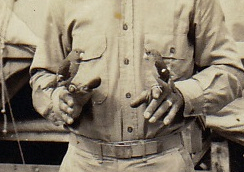 ID Birds
Question
Panama Birds
My uncle served in Panama in 1941
ID Birds
Question
Panama Birds
My uncle served in Panama in 1941
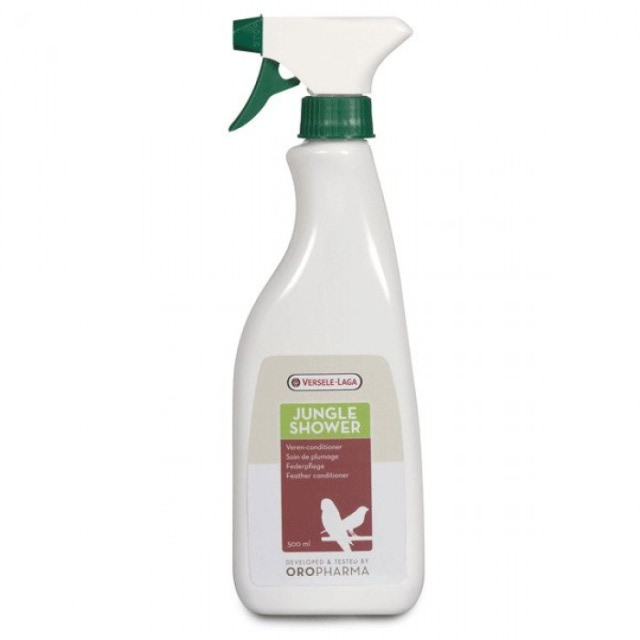 Indian Ringneck Health Issue
QuestionI have an Indian Ringneck who had been neglecte
Indian Ringneck Health Issue
QuestionI have an Indian Ringneck who had been neglecte
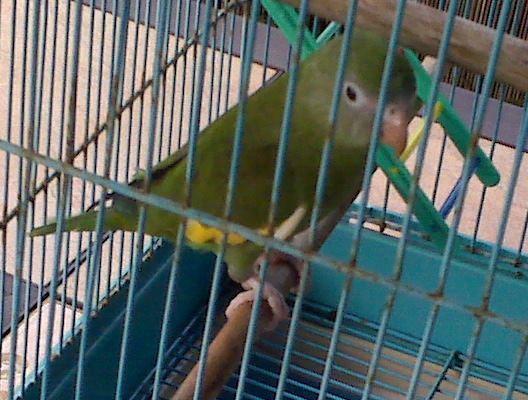 What type of parrot is this?
Question
Friendly bird
A week ago ths small parrot flew
What type of parrot is this?
Question
Friendly bird
A week ago ths small parrot flew
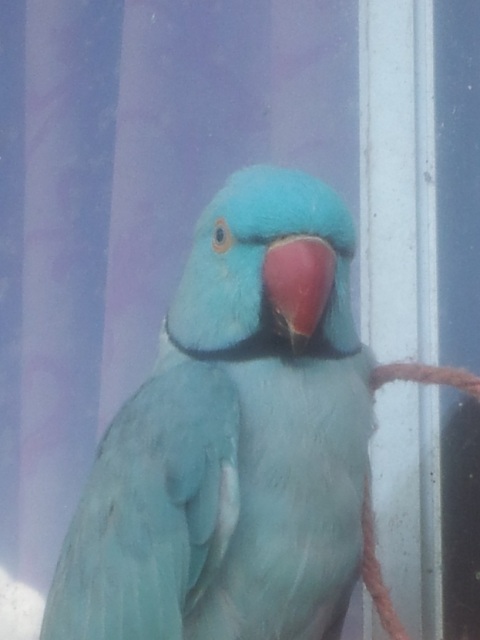 RE: Indian Ringneck probems
Question
Indy our Ringneck
Thank you for your he
RE: Indian Ringneck probems
Question
Indy our Ringneck
Thank you for your he
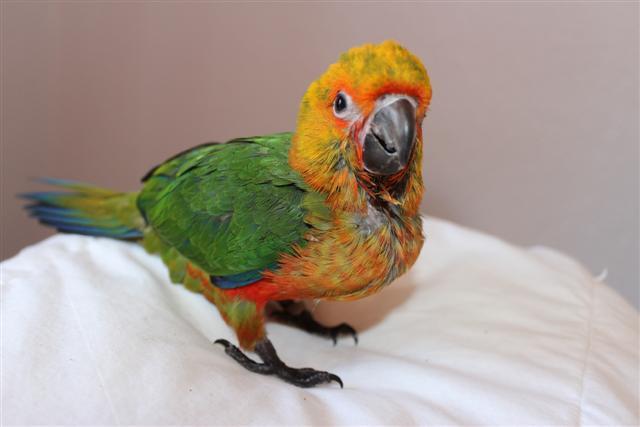 Jenday Conure Weaning?
Question
Castor the Conure
Hi
I have a 9 week o
Jenday Conure Weaning?
Question
Castor the Conure
Hi
I have a 9 week o